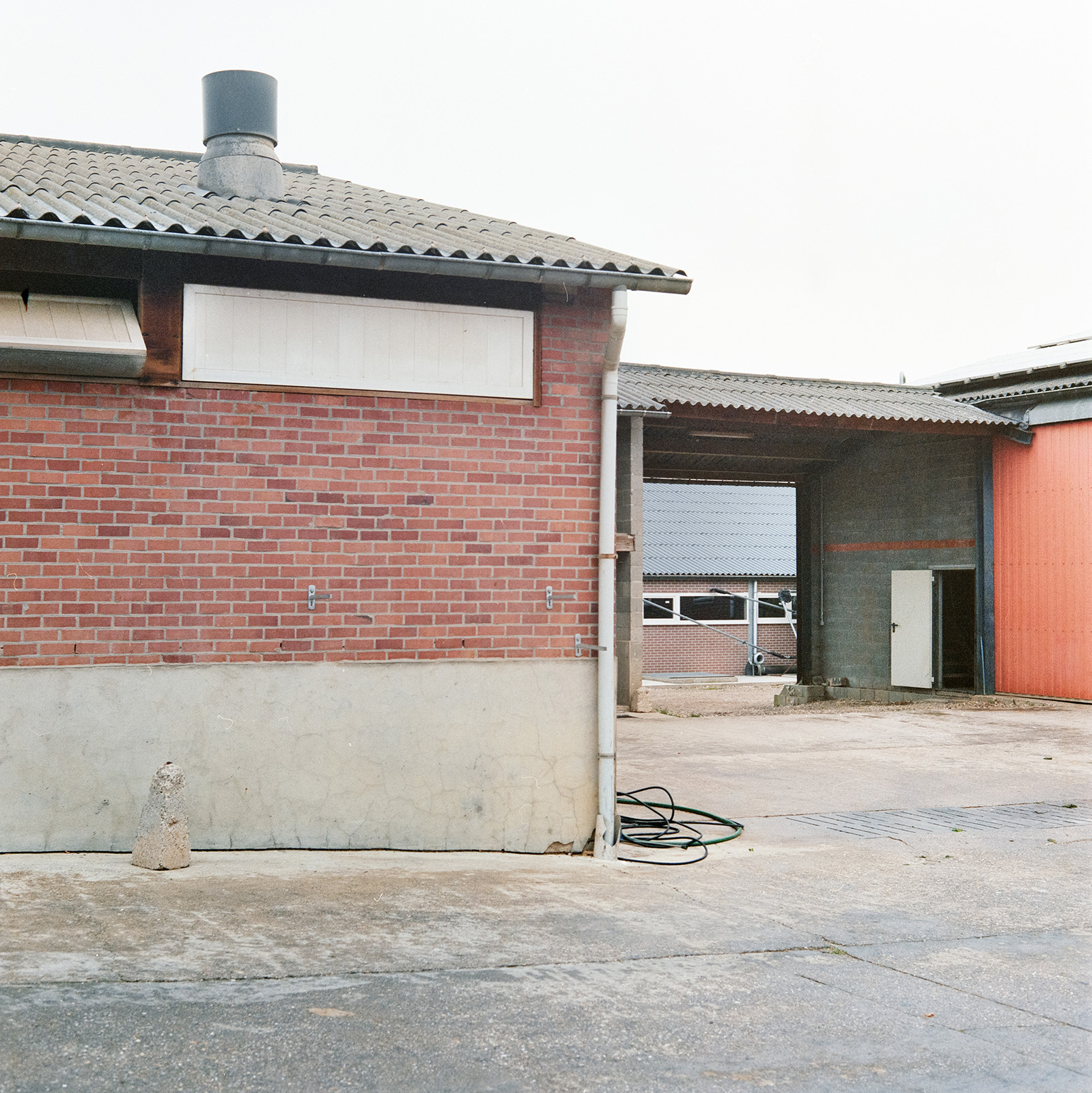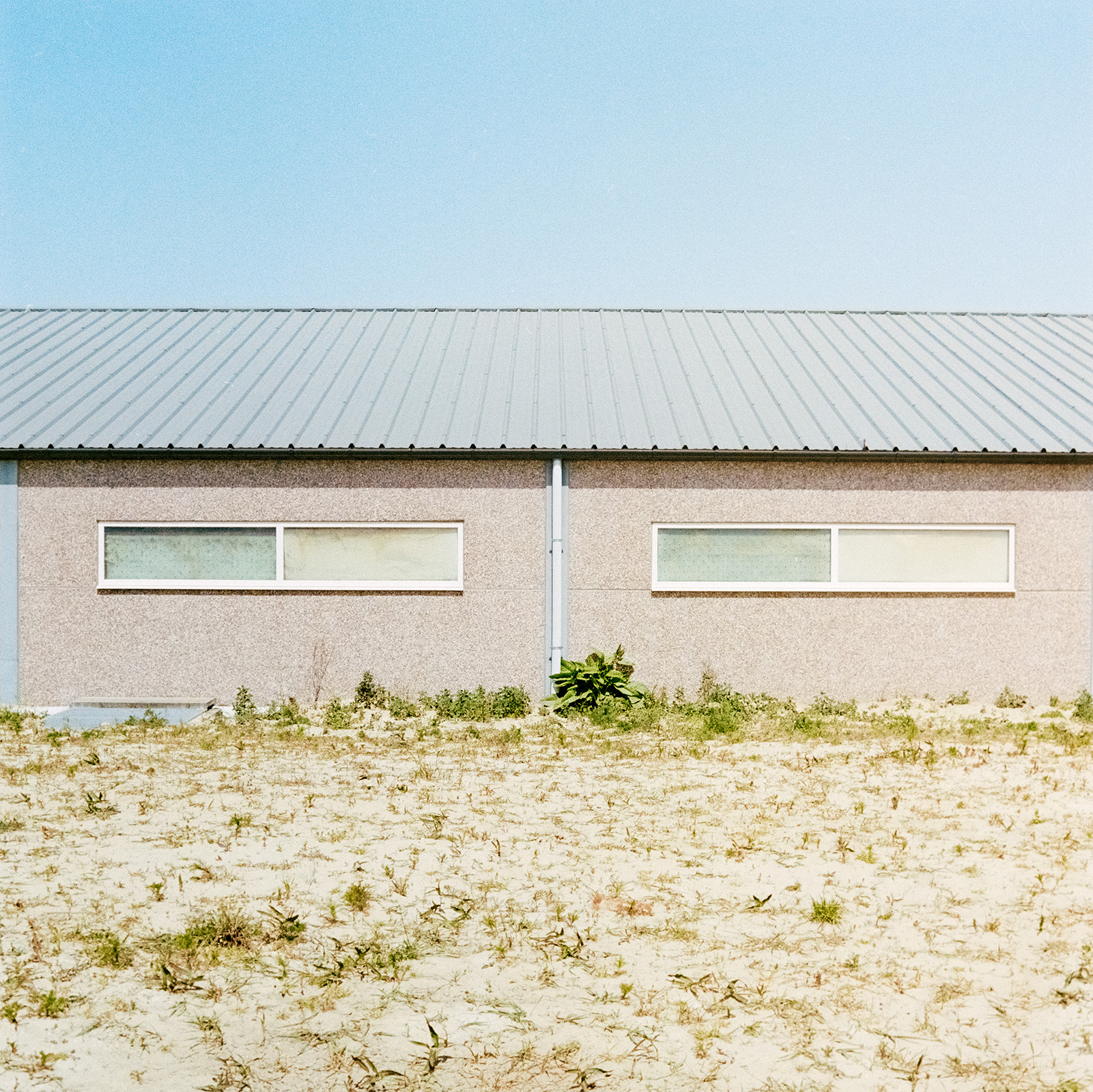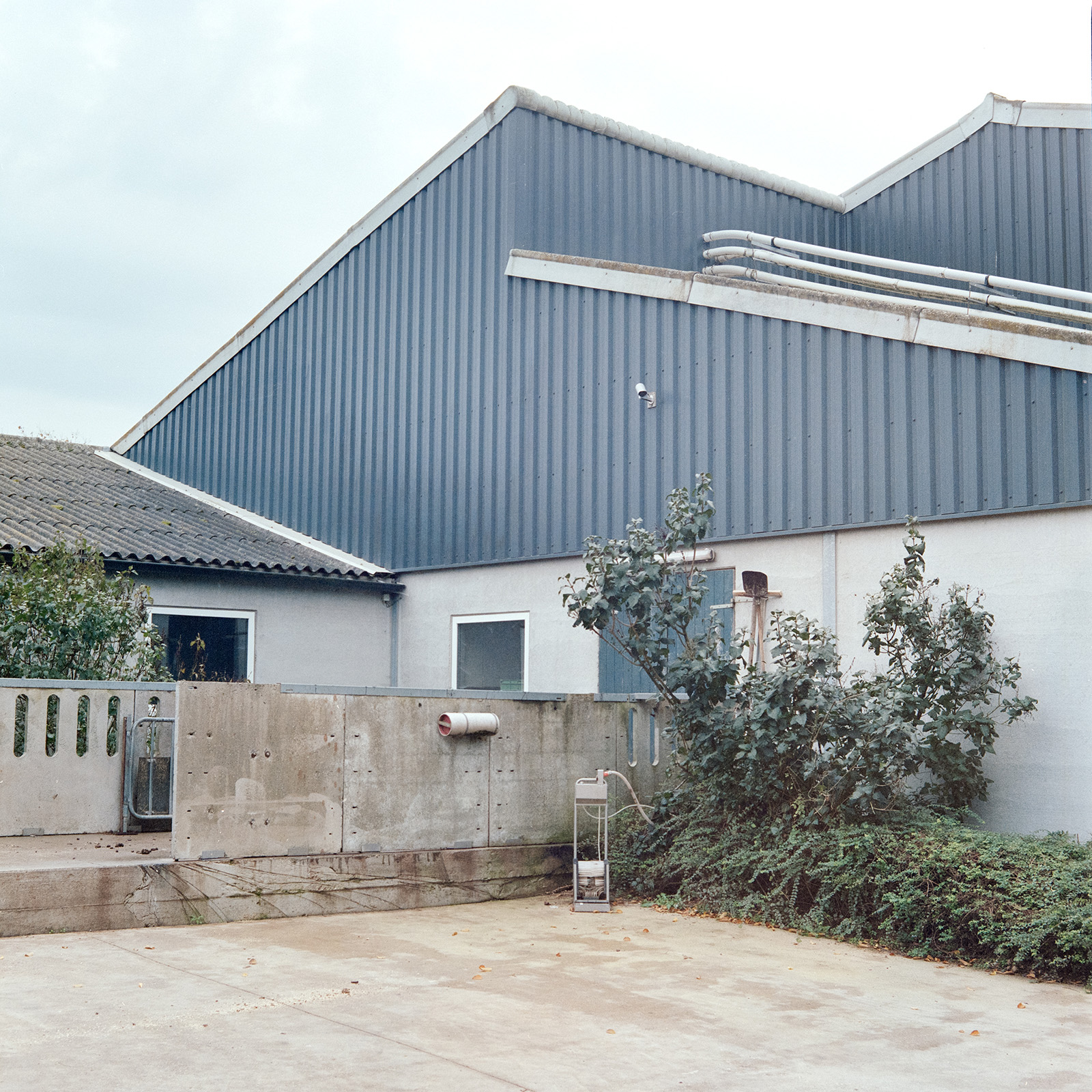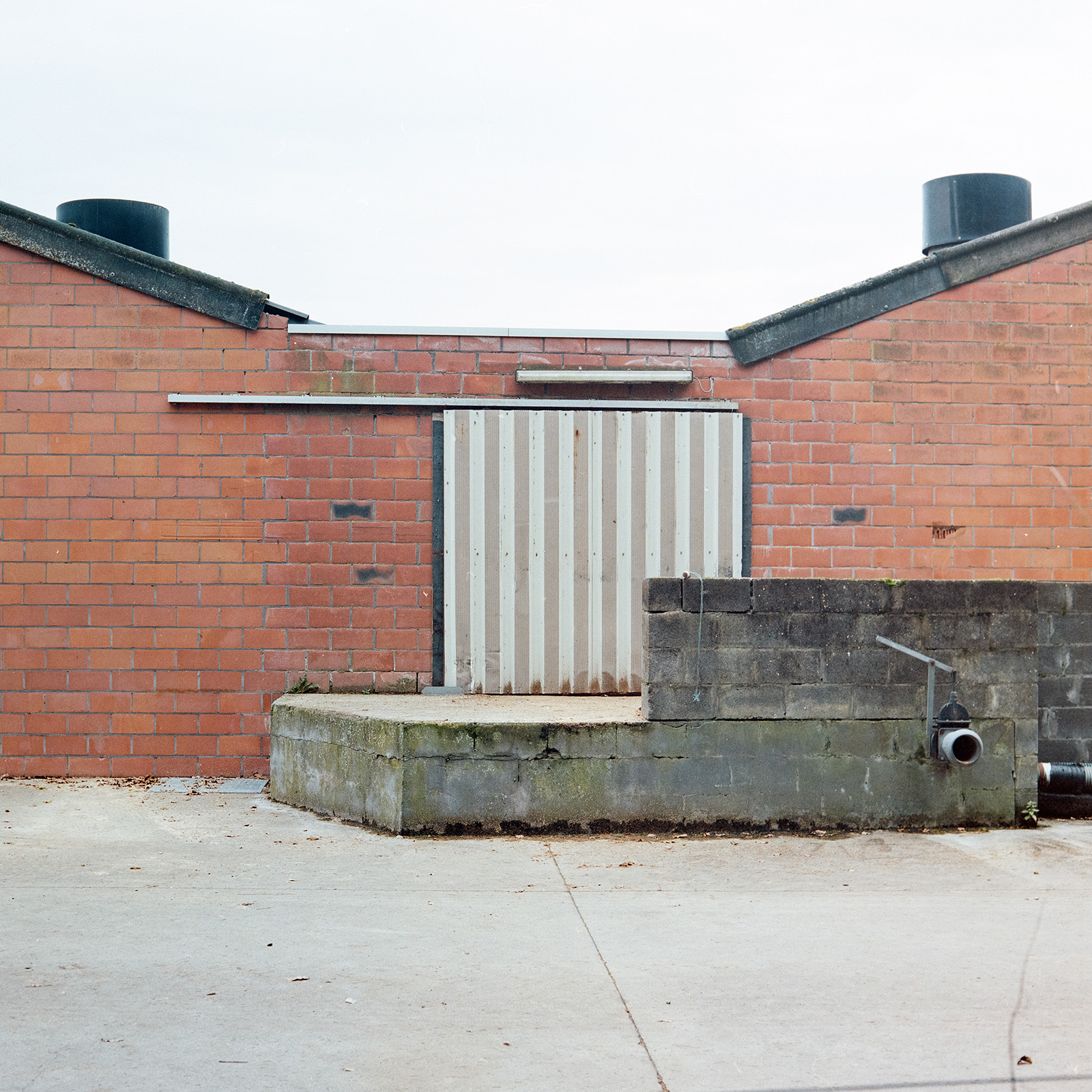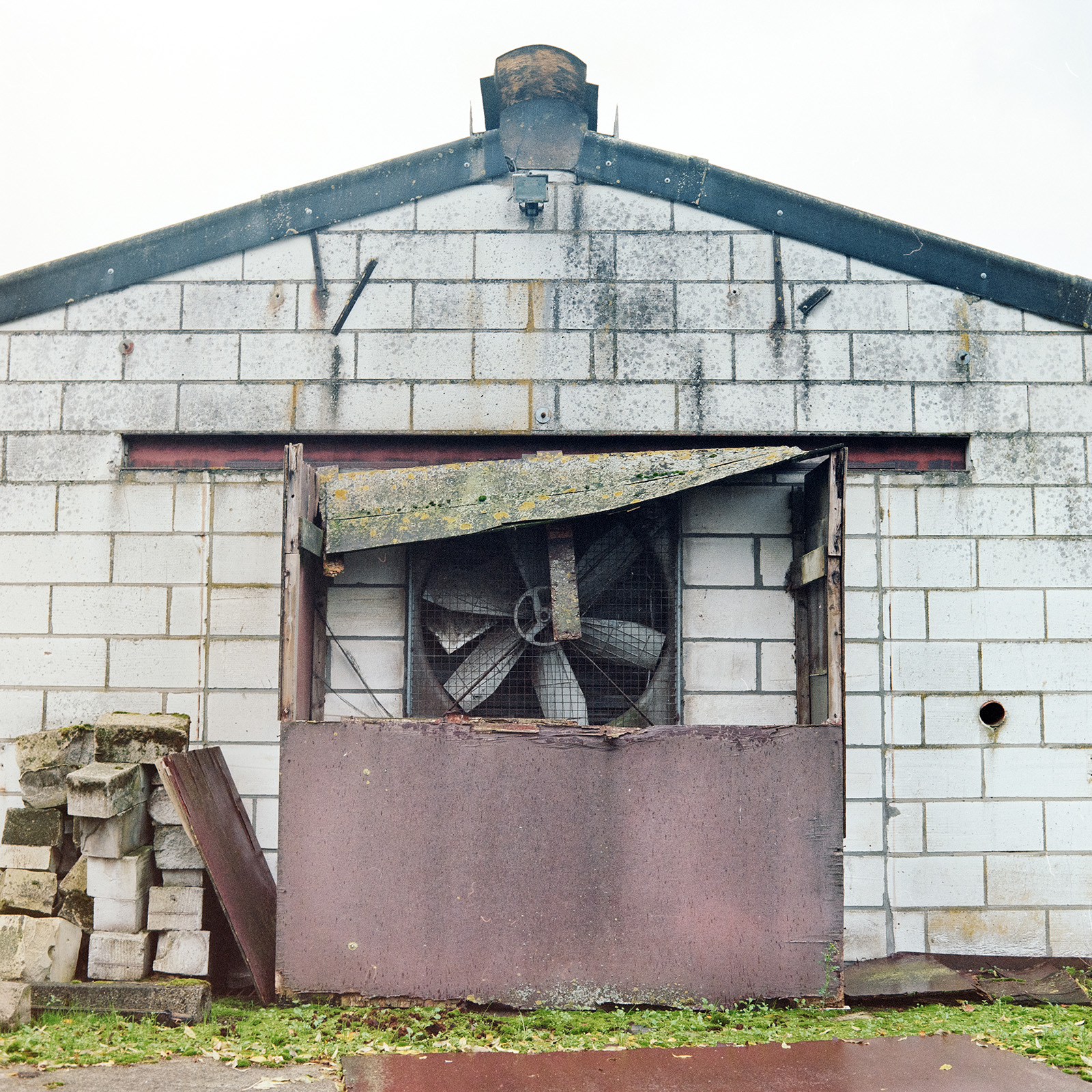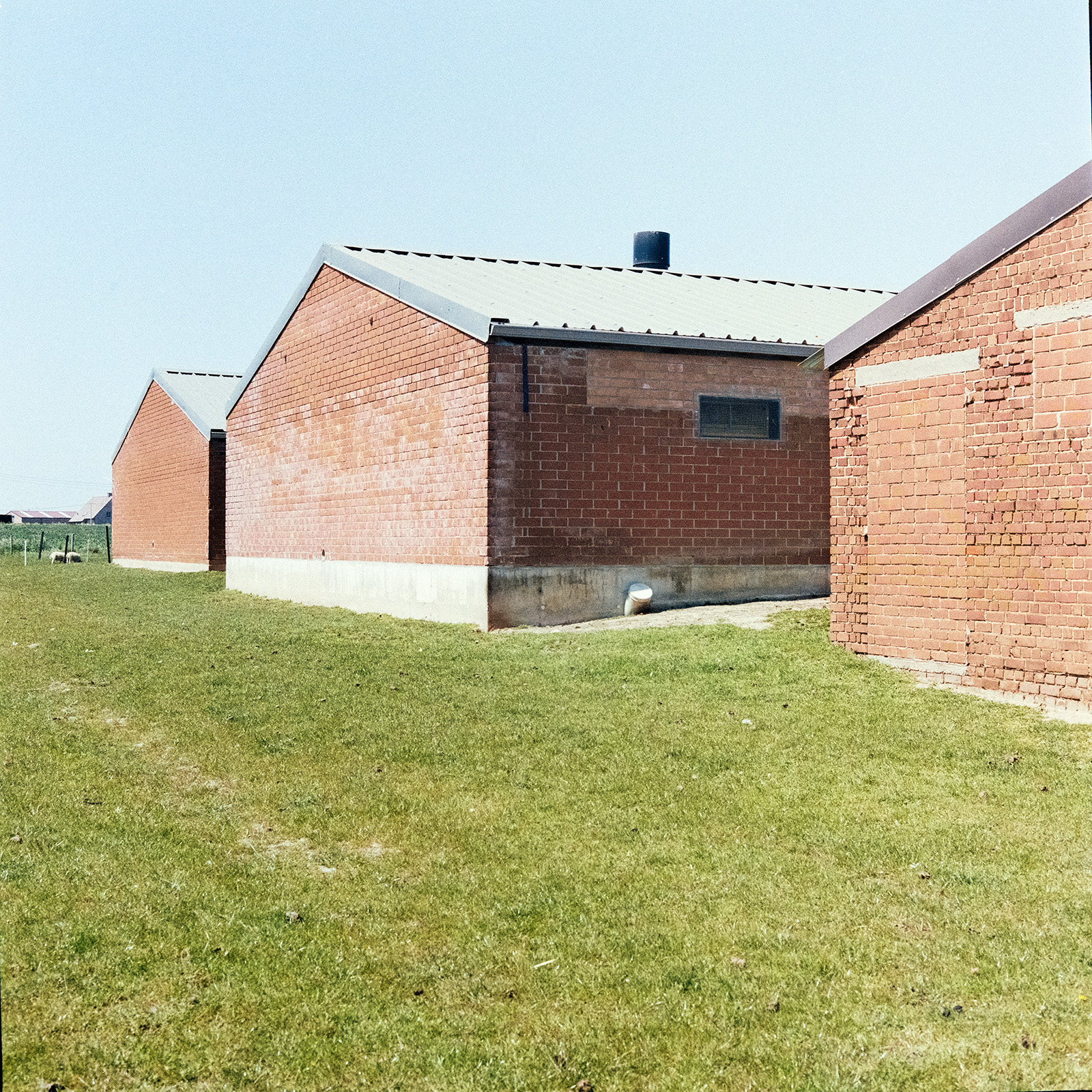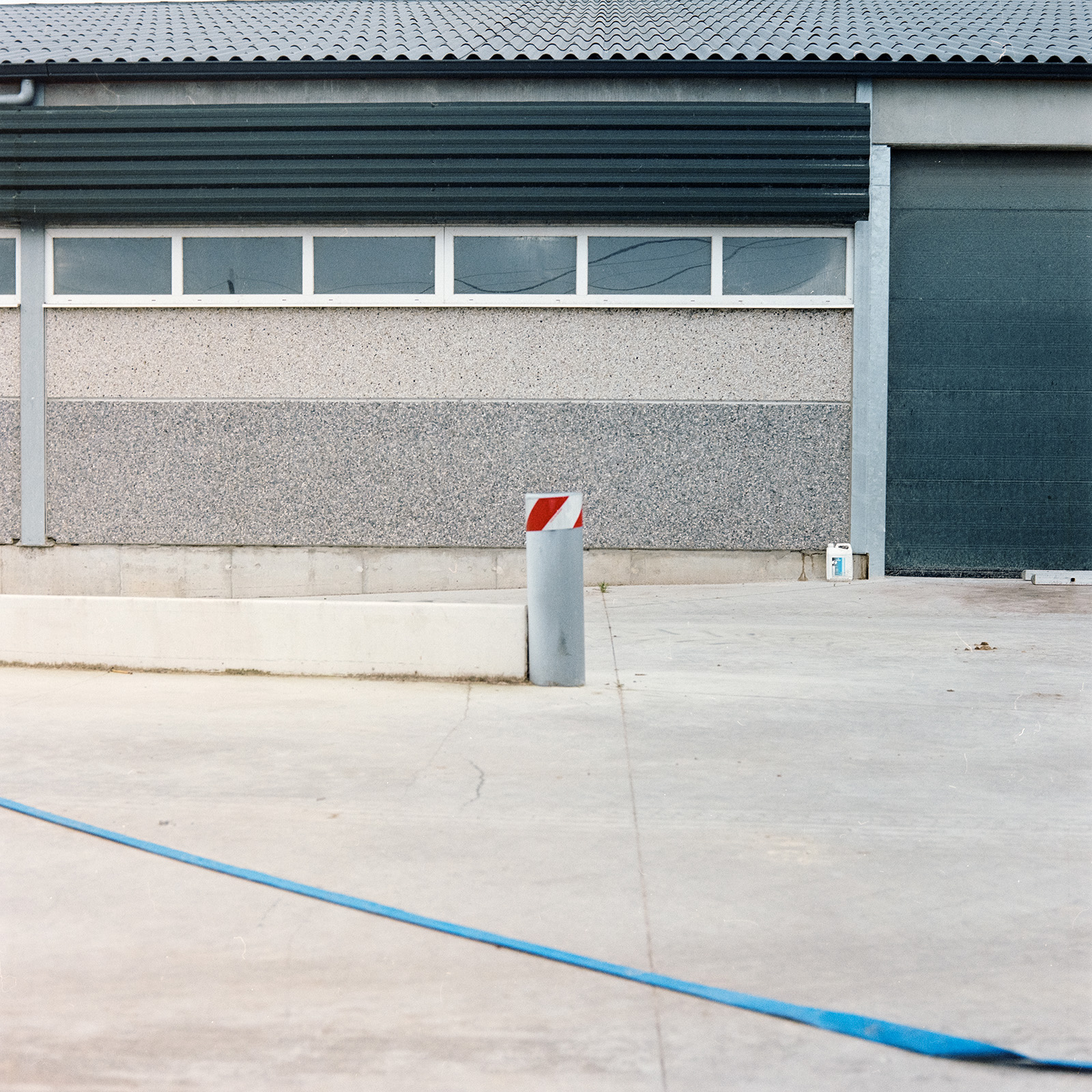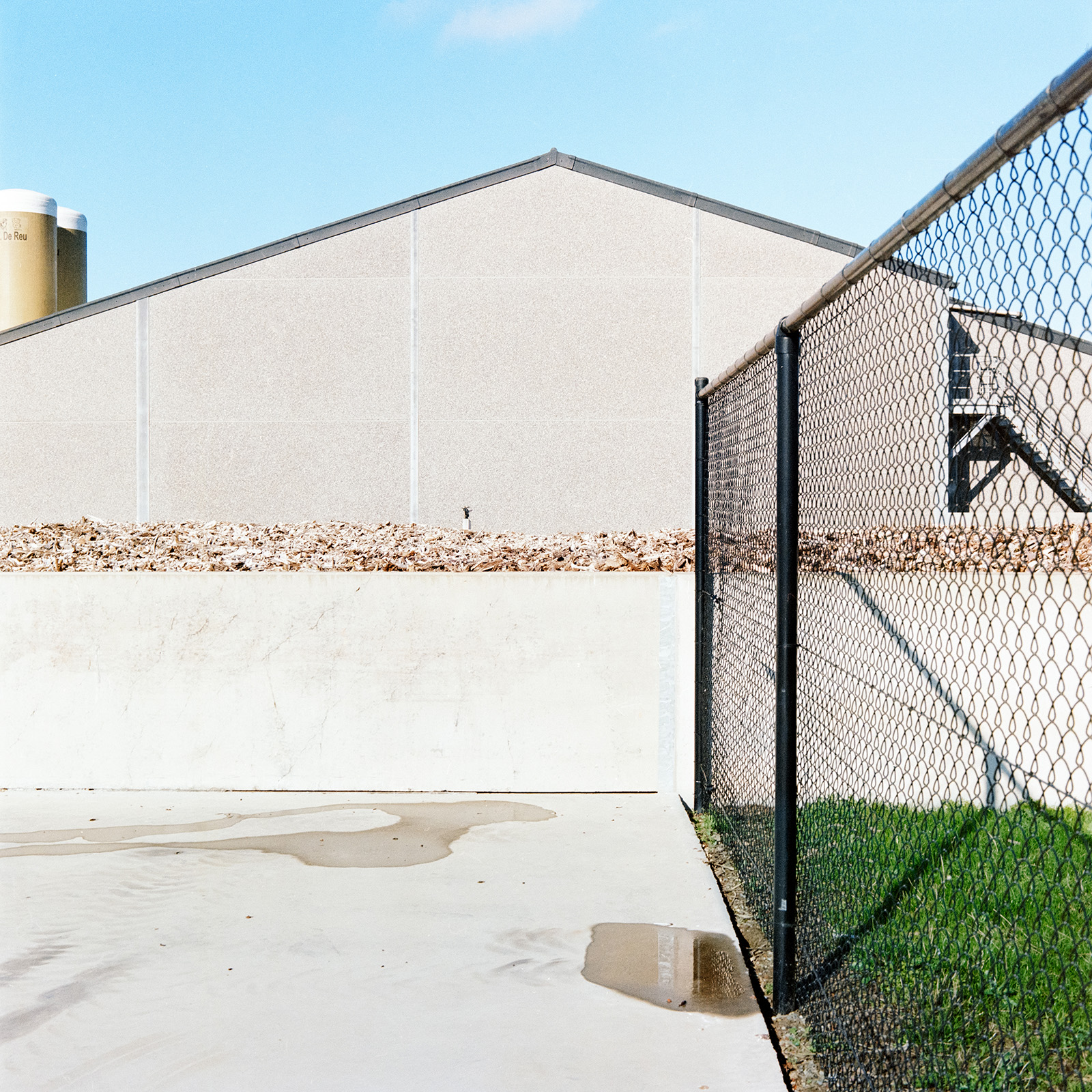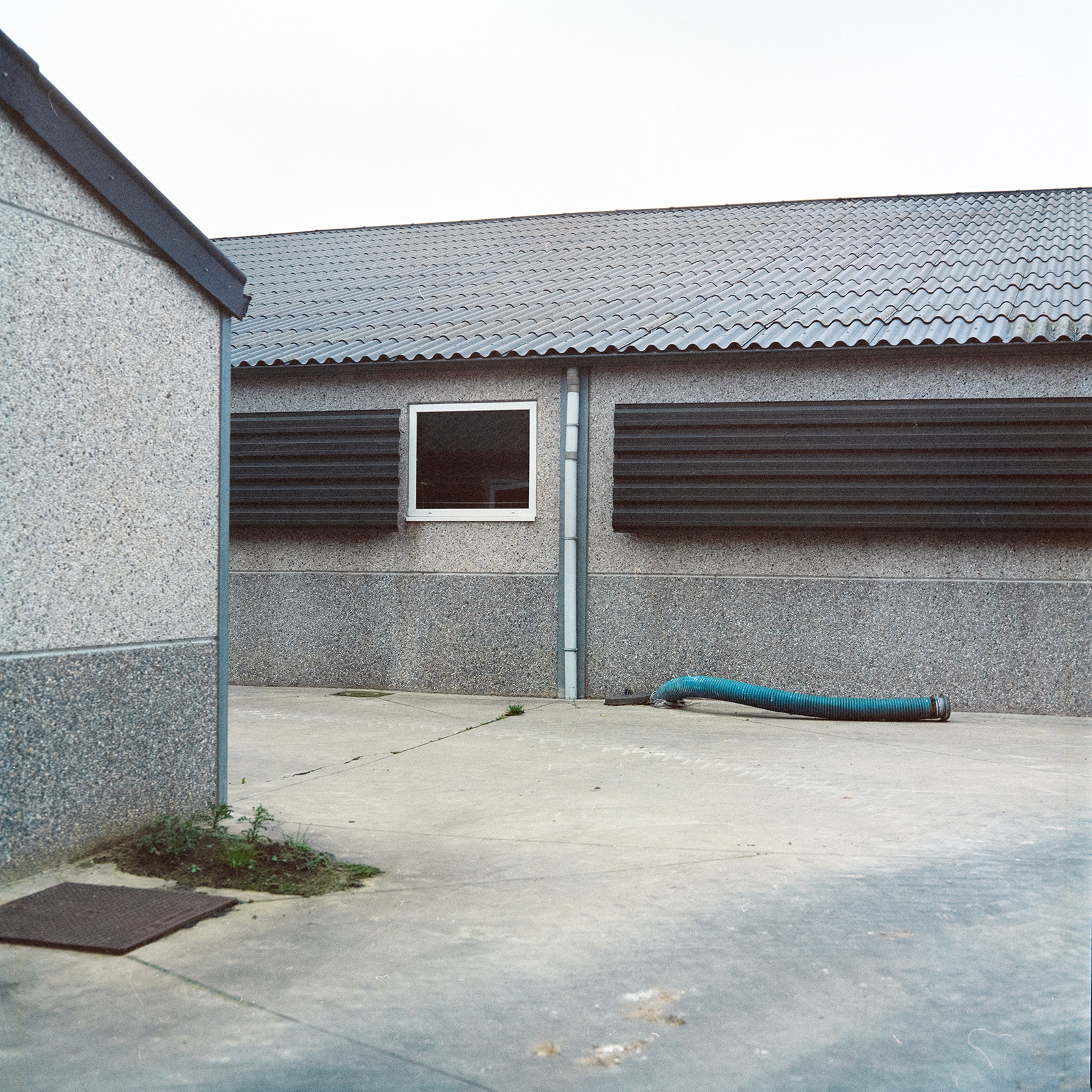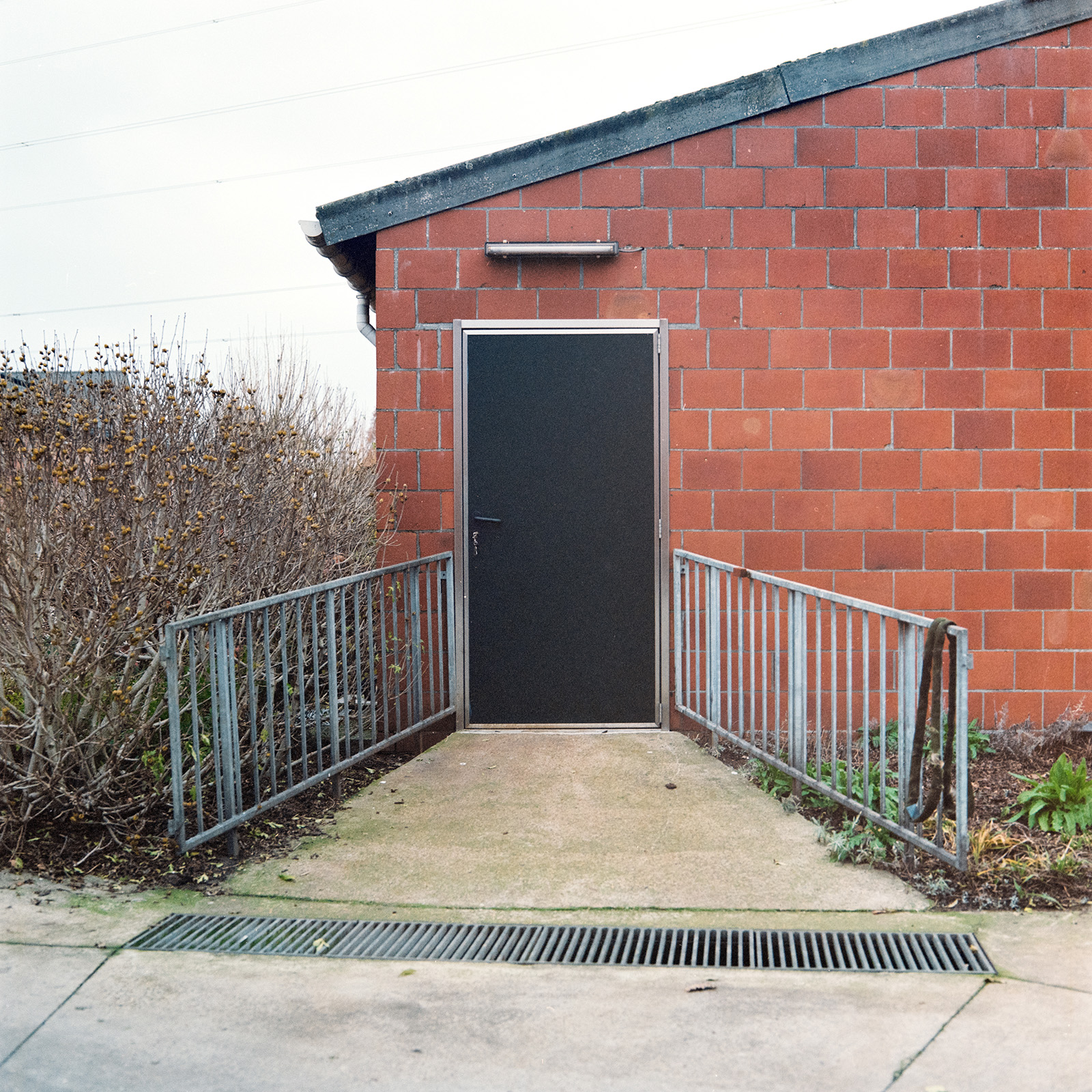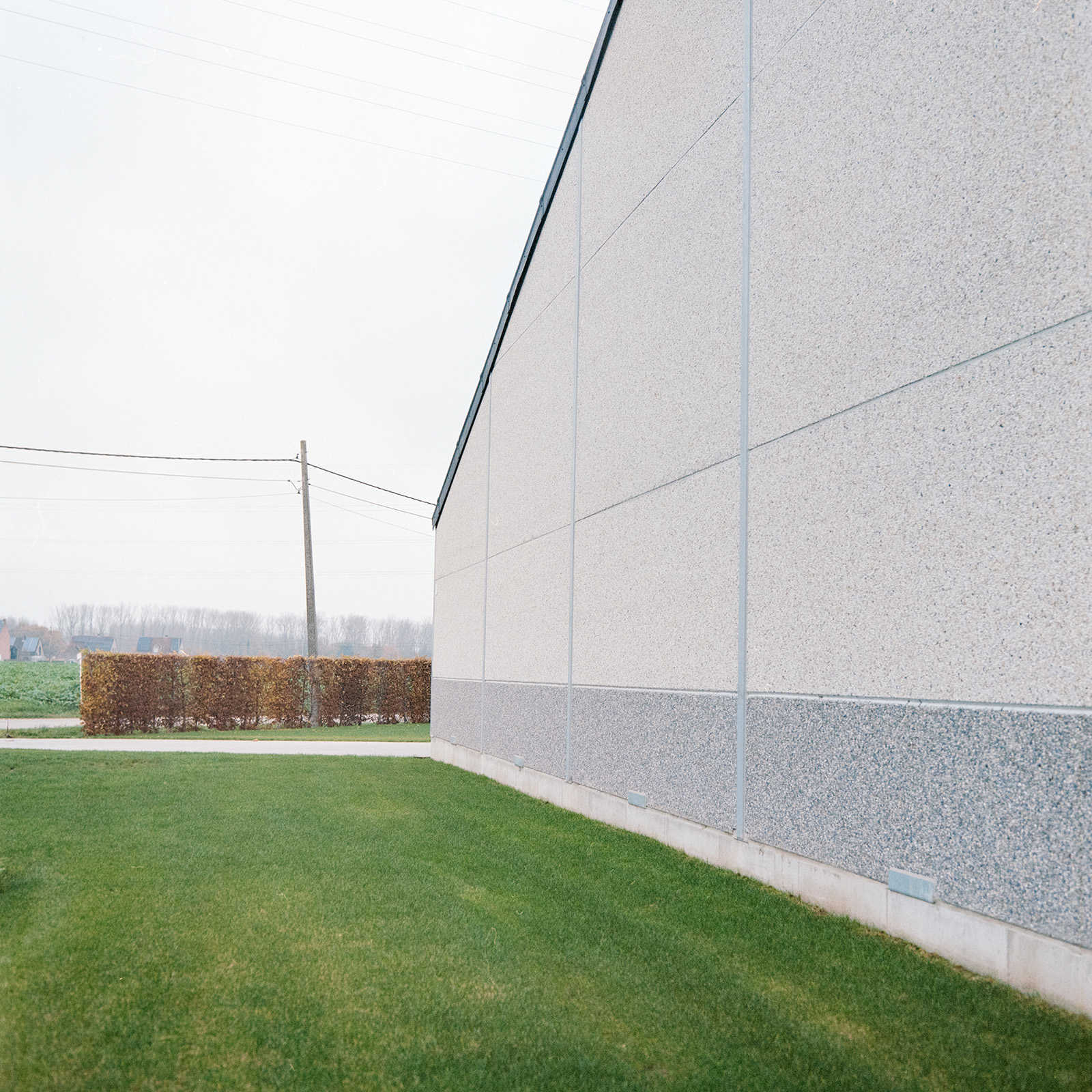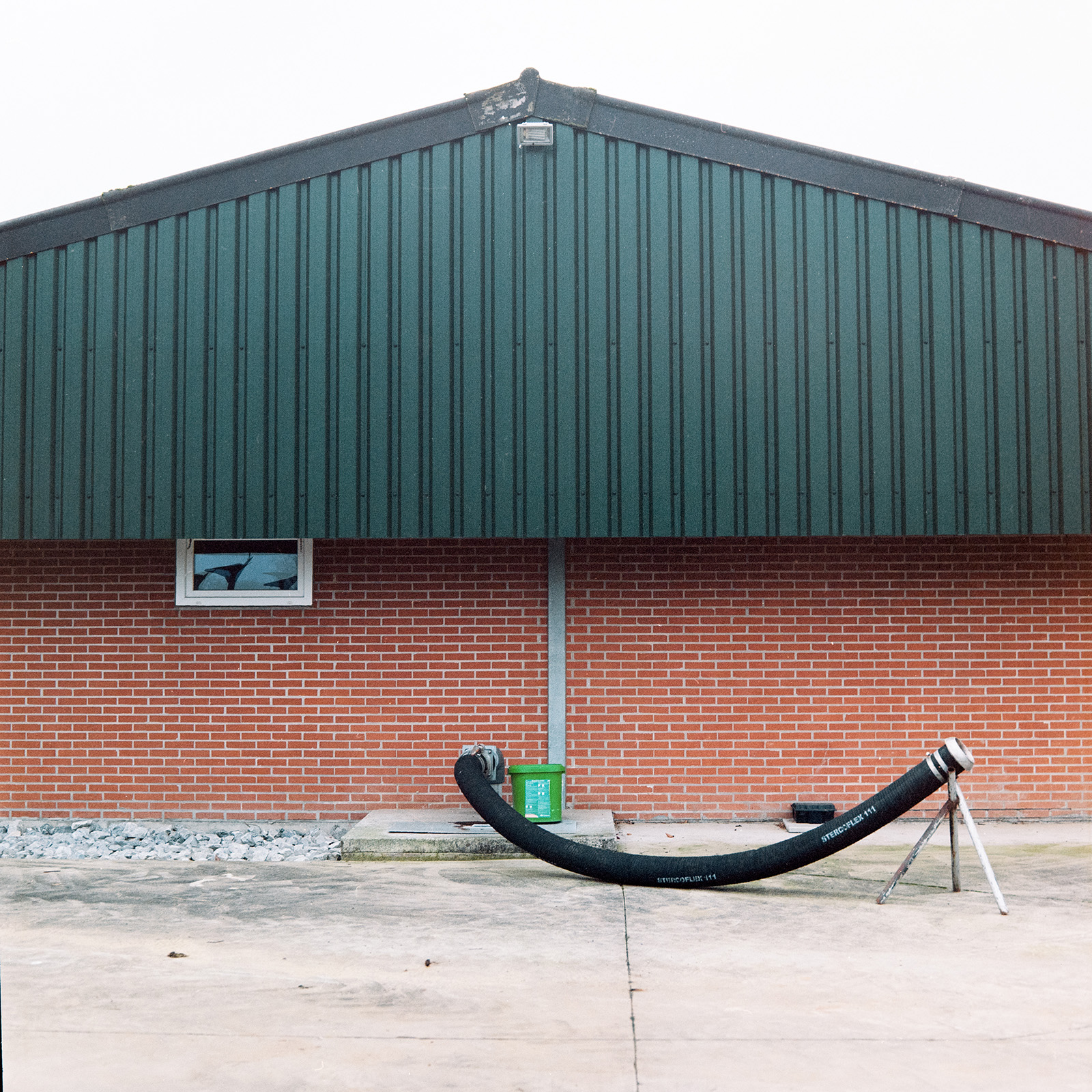05 May ONE STOP CHOP
ONE STOP CHOP
Belgium, a country hosting over eleven million people, currently accommodates nearly six million live pigs. As pigs are typically slaughtered around the age of six months, the number of slaughtered pigs in 2022 matched the number of human inhabitants. While cows graze outdoors and chickens roam in people’s gardens, pigs remain unseen. Most pigs see daylight only once: when they embark on the journey to the slaughterhouse. These swine lead their lives within uniform structures: low, long buildings featuring small windows. Functionality rules over aesthetics in this architecture – 5000 pigs here, 3000 there. Unlike other businesses, no billboard signage proclaiming their existence along the roads.
Beyond contributing to greenhouse gas emissions, extensive pig farming has earned a reputation for releasing substantial quantities of nitrogen oxides and ammonia into the environment, negatively effecting both local nature and more distant areas.
In alignment with the EU’s nature conservation objectives, the Flemish government has adopted measures to reduce the pig population with 30% by 2030, a goal addressed in the much-debated “stikstofakkoord” agreement. However, after years of continuous debate, the latest iteration of the proposed law has been struck down by the court, and time is running out.
Through this project, my intention is to visualize a significant industry that has grown out of harmony with its surroundings. These images capture industrial pig farms, stacking between 2000 and 7000 pigs respectively. Numbers impossible to ignore, yet strangely unnoticeable to the casual bystander.


